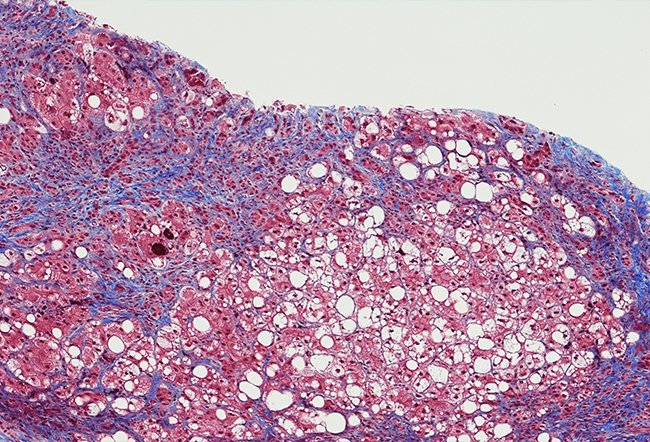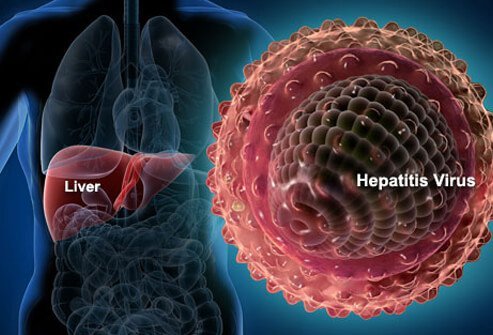
The fatty liver could lead to inflammation in the liver cells in severe cases and cause liver cell death and fibrosis.
Hepatic steatosis or fatty liver disease is a frequent disorder caused by a buildup of fat in the liver. There is a modest amount of fat in a healthy liver. When fat accounts for more than 10 percent of your liver’s weight, it becomes an issue.
The majority of people have no symptoms, and it does not cause them any substantial difficulties. However, in some situations, it can result in progressive liver damage. Lifestyle adjustments can typically prevent or even correct fatty liver disease.
You’re more prone to develop this condition if you drink too much alcohol. Consuming more alcohol causes fat to build up within your liver cells over time. This makes your liver’s job of detoxification more difficult. Even if you don’t consume a lot of alcohol, you can develop fatty liver disease.
Complications of fatty liver disease
The fatty liver could lead to inflammation in the liver cells in severe cases and cause liver cell death and fibrosis. Fatty liver can be alcoholic or nonalcoholic.
A nonalcoholic steatohepatitis is an aggressive form of fatty liver disease defined by liver inflammation that can progress to severe scarring (cirrhosis) and liver failure in certain people. It is common in individuals who are obese and those with diabetes.
The alcoholic fatty liver disease could lead to alcohol-related liver disease. Alcoholic liver disease is reversible if you abstain from alcohol. Otherwise, it can lead to alcoholic hepatitis. This is a symptomatic condition which is when the person realizes their liver damage. By then it might be late.
Alcoholic hepatitis causes jaundice and severe liver damage that ultimately leads to cirrhosis or scarring. Cirrhosis is extreme damage to the liver tissue, and at this point, the person has to stop consuming alcohol to preserve the liver and avoid liver failure.

SLIDESHOW
Hepatitis C, Hep B, Hep A: Symptoms, Causes, Treatment See Slideshow
2 types of fatty liver disease
Two types of fatty liver disease include:
- Alcohol-related fatty liver disease: Heavy alcohol use causes alcoholic fatty liver disease. The majority of the alcohol you consume is broken down by your liver and eliminated from your body. However, the process of dismantling it can result in the release of hazardous compounds. These chemicals can harm the liver cells, cause inflammation, and compromise your body’s immunity. The more alcohol you consume, the more harm you do to your liver. The initial stage of alcohol-related liver disease is alcoholic fatty liver disease.
- Nonalcoholic fatty liver disease (NAFLD): NAFLD is a type of fatty liver disease that isn’t caused by drinking too much alcohol. The first type of NAFLD is simple fatty liver. Simple fatty liver is characterized by the presence of fat in the liver but little or no inflammation or damage to the liver cells. Simple fatty liver rarely progresses to the point of causing liver damage or problems.
Nonalcoholic steatohepatitis (NASH), another type of NAFLD, is a condition in which your liver is inflamed and damaged, as well as fatty. Fibrosis, or scarring of the liver, is caused by inflammation and liver cell destruction. Cirrhosis or liver cancer may develop as a result of NASH.
Latest Digestion News
Daily Health News
Trending on MedicineNet
Symptoms of fatty liver disease
The difficulty is that nonalcoholic fatty liver disease and alcoholic fatty liver disease are frequently asymptomatic. If at all you do have any symptoms, they’ll present in the form of weariness or discomfort in the upper right side of your abdomen.
If you have a severe case or are in extreme stages, then you’ll have the following:
- Swelling in the abdomen, known as ascites
- Spleen enlargement
- Enlarged blood vessels immediately beneath the skin’s surface
- Palms that are red
- The skin and eyes turn a yellowish color indicating jaundice
Diagnosis of fatty liver disease
Because the fatty liver disease is asymptomatic, it is quite difficult to track or diagnose the disease through any visible body changes. The only way your doctor may assume you have it is if you receive abnormal findings on liver tests (blood tests or sonography) that were done for another cause.
The diagnosis is usually done using your medical history, your test results, physical examinations, and so on.

QUESTION
Long-term heavy alcohol consumption can cause: See Answer
Medically Reviewed on 6/28/2022
References
https://www.niddk.nih.gov/health-information/liver-disease/nafld-nash
https://emedicine.medscape.com/article/175472-overview